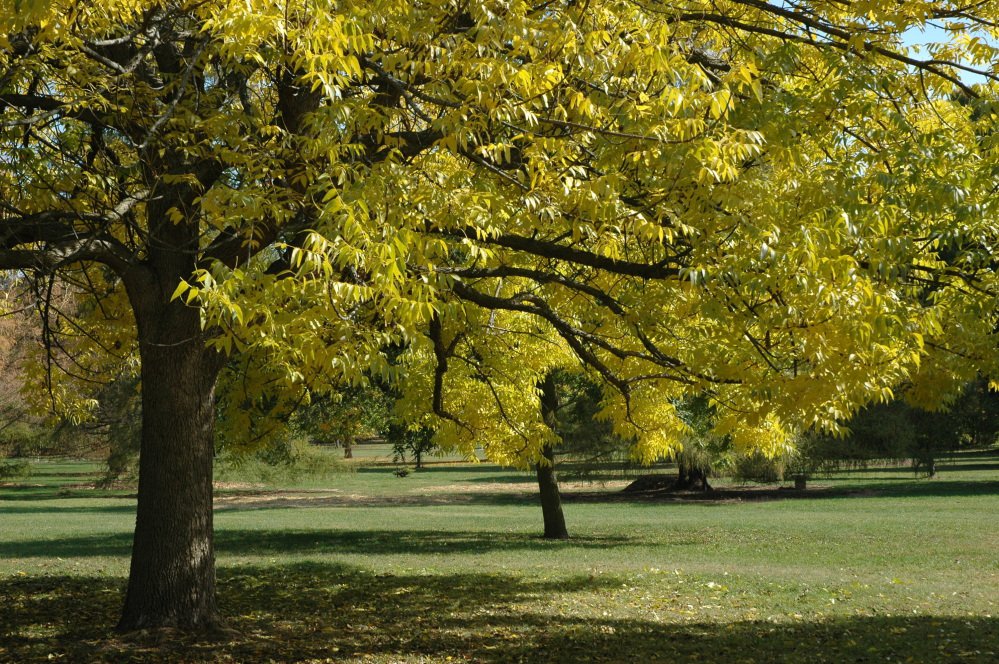Brown ash trees are critically endangered throughout Maine. The emerald ash borer, a parasitic beetle that has already killed ash trees across the United States, was first detected in Maine last May — several years before it was anticipated. Faced with these ongoing threats, the Wabanaki have been leading the defense of brown ash trees in Maine.
Native to wetlands but often planted in New England towns, brown ash trees play a critical role in basket-weaving practices, particularly to those of the Wabanaki. We met recently with Jennifer Neptune, a member of the Penobscot Nation, director of the Maine Indian Basketmakers’ Alliance, and a co-curator of an upcoming art exhibition at Colby College, to learn more about the brown ash tree’s importance to her as well as the tribe and organizations of which she is a member.
The use of brown ash wood is integral to indigenous basket-weaving traditions. Not only does the wood possess flexibility and strength, but the brown ash is also considered to be the source of life in Wabanaki creation stories, central to Wabanaki culture. Under threat of local and global extinctions, brown ash tree endangerment jeopardizes the livelihoods of basketmakers and cultural practices of Wabanaki peoples.
When the beetle was first discovered near Detroit, Michigan, in 2002, the Penobscot Nation began working with Akwesasne Mohawk and Great Lakes tribes to begin saving seeds. Initially, those involved hoped that the emerald ash borer would quickly die out once they consumed all the ash trees in their range.
Simultaneously documenting basketmaking practices and the traditional processes of finding brown ash trees suitable for this purpose, Indigenous basketmakers hoped that even if the art skipped a generation, the art form would reemerge with a new, healthy generation of brown ash trees.
Unfortunately, the emerald ash borer is difficult to eradicate once it has infested an area, and seed banks will not be enough to prevent the death of brown ash trees. To address this, the Penobscot Nation encouraged state government to pass legislation preventing the movement of infested firewood, and in 2010, the Legislature made it illegal to move firewood across state lines.
However, legislation has not been sufficient to stop the spread of the emerald ash borer, so the Wabanaki and the basketmakers alliance have worked to research methods that can combat the bug more directly. University of Maine researchers have been working with Indigenous peoples to find ways to use aspects of the emerald ash borer’s native ecosystems in Siberia and northern China that would make them less of a threat here in Maine.
One possibility is introducing a non-stinging Chinese wasp whose natural prey is the emerald ash borer. The U.S. Department of Agriculture has released this wasp in Michigan to determine its feasibility. Another option is to splice brown ash trees with DNA from trees growing in Siberia and China that are already resistant to the emerald ash borer.
While these options are promising, it’s also possible that we do not need to look further than Maine ecosystems for a solution. Researchers have been investigating how native woodpeckers are changing their behavior to begin eating the emerald ash borer themselves. The Maine Forest Service entomologists are also working with non-stinging native wasps to provide early detection of the emerald ash borer.
According to the Maine Forestry Service, individuals can take steps to limit the spread of emerald ash borer-infected wood. For example, making a conscious effort not to transport firewood across state borders or between campsites can greatly reduce the spread of invasive species. Institutional changes might include stricter enforcement of wood transport laws and more thorough investigations of wood sources from vendors. All Mainers can support these broader changes by bringing them up with their municipal and state officials.
Brown ash trees are found throughout Maine. Take a moment to notice the trees in your community and seek out some indigenous baskets woven from brown ash. The basketmakers group has a tent at the Common Ground fair in Unity every September.
Additionally, there is an upcoming exhibition from July 2019 through January 2020 at Colby College focused on Wabanaki contemporary art. This exhibit, “Wíwənikan…the beauty we carry,” is co-curated by Jennifer Neptune, and is free and open to the public.
Another exhibit, “Holding Up the Sky: Wabanaki People, Culture, History & Art,” is currently taking place at the Maine Historical Society in Portland. There are also Indigenous museums, such as the Abbe Museum in Bar Harbor and the Penobscot Nation museum on Indian Island, where brown ash baskets are featured as just one of the masterpieces of Native American art.
Grace Neumiller, Keller Leet-Otley and Tommaso Wagner are students at Colby College.
Send questions/comments to the editors.



Comments are no longer available on this story